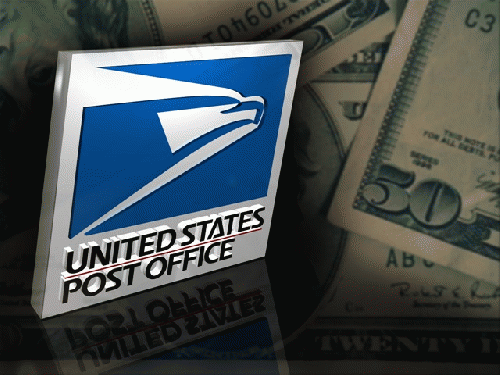Neither rain nor sleet nor snow may have stopped the Pony Express, but the nation's oldest and second largest employer is now under attack. Claiming the Postal Service is bankrupt, critics are pushing legislation that would defuse the postal crisis by breaking the backs of the postal workers' unions and mandating widespread layoffs. But the "crisis" is an artificial one, created by Congress itself.
In 2006, Congress passed the Postal Accountability Enhancement Act (PAEA), which forced the USPS to put aside billions of dollars to pay for the health benefits of employees, many of whom hadn't even been hired yet. Over a mere 10 year period, the USPS was required to prefund its future health care benefit payments to retirees for the next 75 years, something no other government or private corporation is required to do. As consumer advocate Ralph Nader observed, if PAEA had never been enacted, USPS would now be facing a $1.5 billion surplus.
The USPS is a profitable, self-funded venture that is not supported by the taxpayers. It is funded with postage stamps--one of the last vestiges of government-issued money. Stamps are fungible and can be traded at par; and they are backed, not by mere government "fiat," but by labor. One stamp will buy the labor to transport your letter 3000 miles.
The USPS is one of the few businesses the government is allowed to operate in competition with private companies; it is the only U.S. agency that services all its citizens six days per week; and it is perhaps the last form of communication that protects privacy, since tampering with it is against federal law. In 1999, it employed nearly a million people; and today, it employs over 600,000. Where are those workers to go, when the post office is no more?
To Downsize or Diversify?
Whatever caused the financial woes of the USPS, there is another way to mitigate the crisis than slashing employee benefits and customer services. In a December 21st article, Tim Fernholz suggested that instead of focusing on cuts, the post office should approach the problem from a business perspective and find a new way to make money. One way to keep the USPS alive, he says, is for it to include basic banking services in its product line, providing a " public option" in banking :
[R]oughly 9 million Americans don't have a bank account and 21 million rely largely on fringe financial services like usurious check cashers rather than traditional financial institutions. Giving low-income people access to a safe banking system will firm up their economic futures.
The Proud, Forgotten History of Postal Banking
Banking in post offices is not new. Many countries, including Germany, France, Italy, Japan, and New Zealand, have a long and successful history of it; and so does the United States.
From 1911 to 1967, the U.S. Postal Savings System provided a safe and efficient place for customers to save and transfer funds. It issued U.S. Postal Savings Bonds in various denominations that paid annual interest, as well as Postal Savings Certificates and domestic money orders. The U.S. Postal Savings System was set up early in the 20th century to attract the savings of immigrants accustomed to saving at post offices in their native countries, provide safe depositories for people who had lost confidence in private banks, and furnish more convenient depositories for working people than were provided by private banks. (Post offices were then open from 8 a.m. to 6 p.m. six days a week, substantially longer than bankers' hours.) The postal system paid two percent interest on deposits annually. The minimum deposit was $1 and the maximum was $2,500. Savings in the system spurted to $1.2 billion during the 1930s and jumped again during World War II, peaking in 1947 at almost $3.4 billion.
The U.S. Postal Savings System was shut down in 1967, not because it was inefficient but because it was considered unnecessary after private banks raised their interest rates and offered the same governmental guarantees that the postal savings system had.
The Kiwibank Model: Postal Banks to Serve Local Communities
Postal banks are now thriving in New Zealand, not as a historical artifact but as a popular new innovation. When they were instituted in 2002, it was not to save the post office but to save New Zealand families and small businesses from big-bank predators. By 2001, Australian mega-banks controlled some 80% of New Zealand's retail banking. Profits went abroad and were maximized by closing less profitable branches, especially in rural areas. The result was to place hardships on many New Zealand families and small businesses.
(Note: You can view every article as one long page if you sign up as an Advocate Member, or higher).






